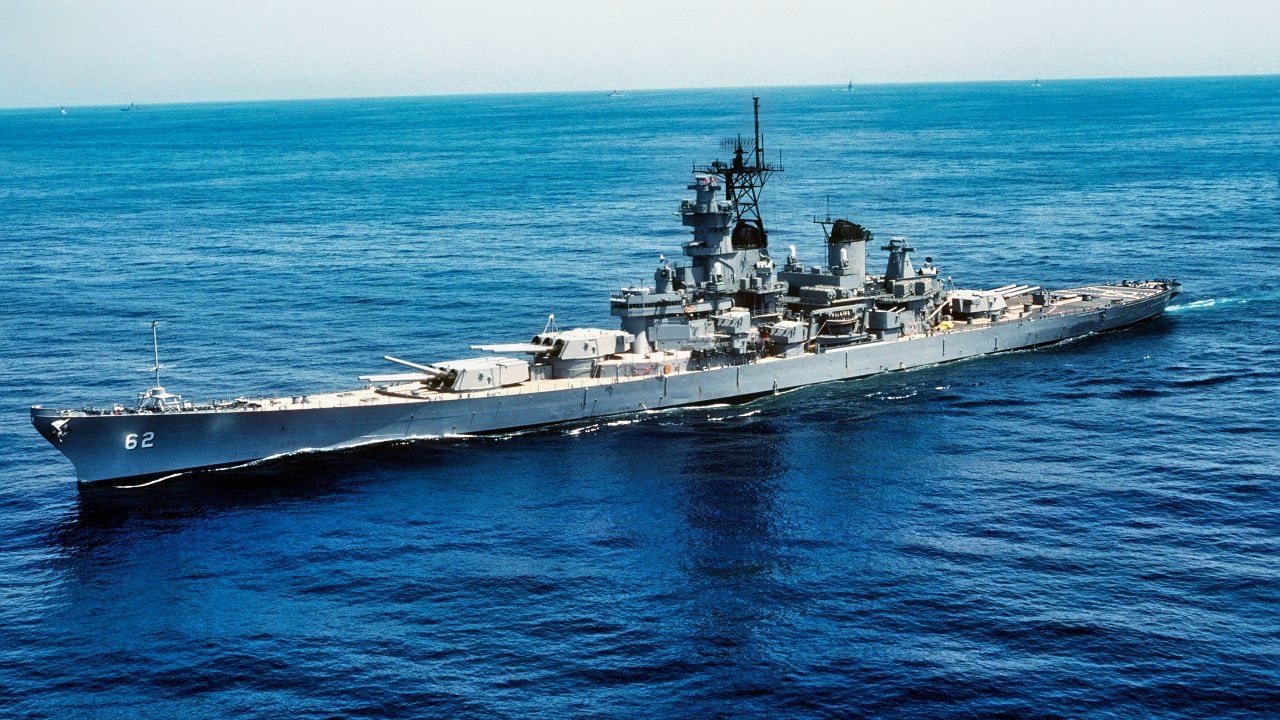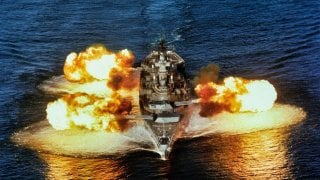'Intense Bombardment': 1 Iowa-Class Battleship Fired 5,000 16-Inch Shells During Vietnam War
USS New Jersey (BB-62), nicknamed “Big J,” was the only U.S. battleship to provide gunfire support during the Vietnam War, setting it apart from its Iowa-class peers. Originally commissioned in 1943 and serving in World War II and the Korean War, New Jersey was reactivated in 1968 to counter heavy aircraft losses in Vietnam.
What You Need to Know: USS New Jersey (BB-62), nicknamed “Big J,” was the only U.S. battleship to provide gunfire support during the Vietnam War, setting it apart from its Iowa-class peers. Originally commissioned in 1943 and serving in World War II and the Korean War, New Jersey was reactivated in 1968 to counter heavy aircraft losses in Vietnam.

-After upgrades, the ship delivered intense bombardment, firing thousands of 16-inch and 5-inch shells, destroying enemy structures and bunkers.
-After serving through the Cold War and even participating in Operation Desert Storm, New Jersey was decommissioned in 1991 and now serves as a museum ship.
USS New Jersey’s Vietnam War Legacy: The Only U.S. Battleship to Provide Gunfire Support
Nicknamed “Big J,” the USS New Jersey (BB-62), was the second Iowa-class battleship, and a participant in both the Second World War and the Korean War. But the New Jersey’s participation in the Vietnam War is what sets her apart from her peer vessels; the New Jersey ws the only US battleship to provide gunfire support during the Vietnam War.
The New Jersey’s Ressurection
The New Jersey was commissioned, and decommissioned, on four separate occasions. As a result, the New Jersey has a patchwork service record that spans the back half of the twentieth century. Here are the dates during which the New Jersey was commissioned: 1943-1948; 1950-1957; 1968-1969; 1982-1991.
During the third commissioning, 1968-1969, the New Jersey was activated to participate in what is remembered as America’s most polarizing war, the Vietnam War.
At the onset of the Vietnam War, the US suffered heavy aircraft loss rates. Concerned, the US commissioned studies to understand how to alleviate aircraft losses, and deliver more ordnance on target. Relatedly, on May 31st, 1967, Secretary of Defense Robert McNamara greenlit a study to understand what would be required to activate the dormant New Jersey battleship. The study concluded that reactivating the New Jersey was feasible, prompting McNamara to recommission the battleship “for employment in the Pacific Fleet to augment the naval gunfire support force in Southeast Asia.”
McNamara selected New Jersey because she was in better condition that her peer Iowa-class battleships – thanks to an extensive overhaul that was completed just before her most recent decommissioning. Still, once reactivated, the New Jersey required some retrofitting, in which the 20mm and 40mm anti-aircraft guns were removed, and her electronic warfare systems and radar were upgraded. After being modernized, the New Jersey set forth for sea trials, during which she set a battleship world speed record, achieving 35.2 knots (40.5 miles per hour), for six straight hours.
Deployed to Vietnam
After sailing from Long Beach, California, to Pearl Harbor, Hawaii, to Subic Bay, Philippines, the New Jersey joined the gun line near the 17th parallel off the Vietnamese coast, in October 1968. The New Jersey then fired 29 sixteen inch rounds against People’s Army of Vietnam (PAVN) targets – it was the first time the battleship had fired her guns in sixteen years.

The New Jersey’s most intensive shore bombardment would come a month later, in November 1968, when she spent two days concentrating her fire at Viet Cong storage areas near Quang Ngai. The New Jersey is credited with destroying 182 structures and 54 bunkers, while heavily damaging 93 more structures and several tunnel complexes, during this bombardment.
The New Jersey stayed on the gunline, in various Vietnamese coastal locations, until April 1st, 1969, when she departed for Japan. The storied battleship would not return to Vietnamese waters; her tour concluded having fired 5,688 rounds of 16-inch shells, and 14.891 rounds of 5-inch shells.
From WWII to Desert Storm: The Epic Journey of the USS New Jersey
Remarkably, the New Jersey was reactivated again, in the 1980s, when President Reagan decided to expand the Navy to 600 vessels. The New Jersey was modernized once more, before enjoying a relatively quiet 1980s, and participating in Operation Desert Storm.
The New Jersey was decommissioned, for the final time, in 1991, and has since served as a museum ship.
About the Author: Harrison Kass
Harrison Kass is a defense and national security writer with over 1,000 total pieces on issues involving global affairs. An attorney, pilot, guitarist, and minor pro hockey player, Harrison joined the US Air Force as a Pilot Trainee but was medically discharged. Harrison holds a BA from Lake Forest College, a JD from the University of Oregon, and an MA from New York University. Harrison listens to Dokken.
The main image is Creative Commons.


